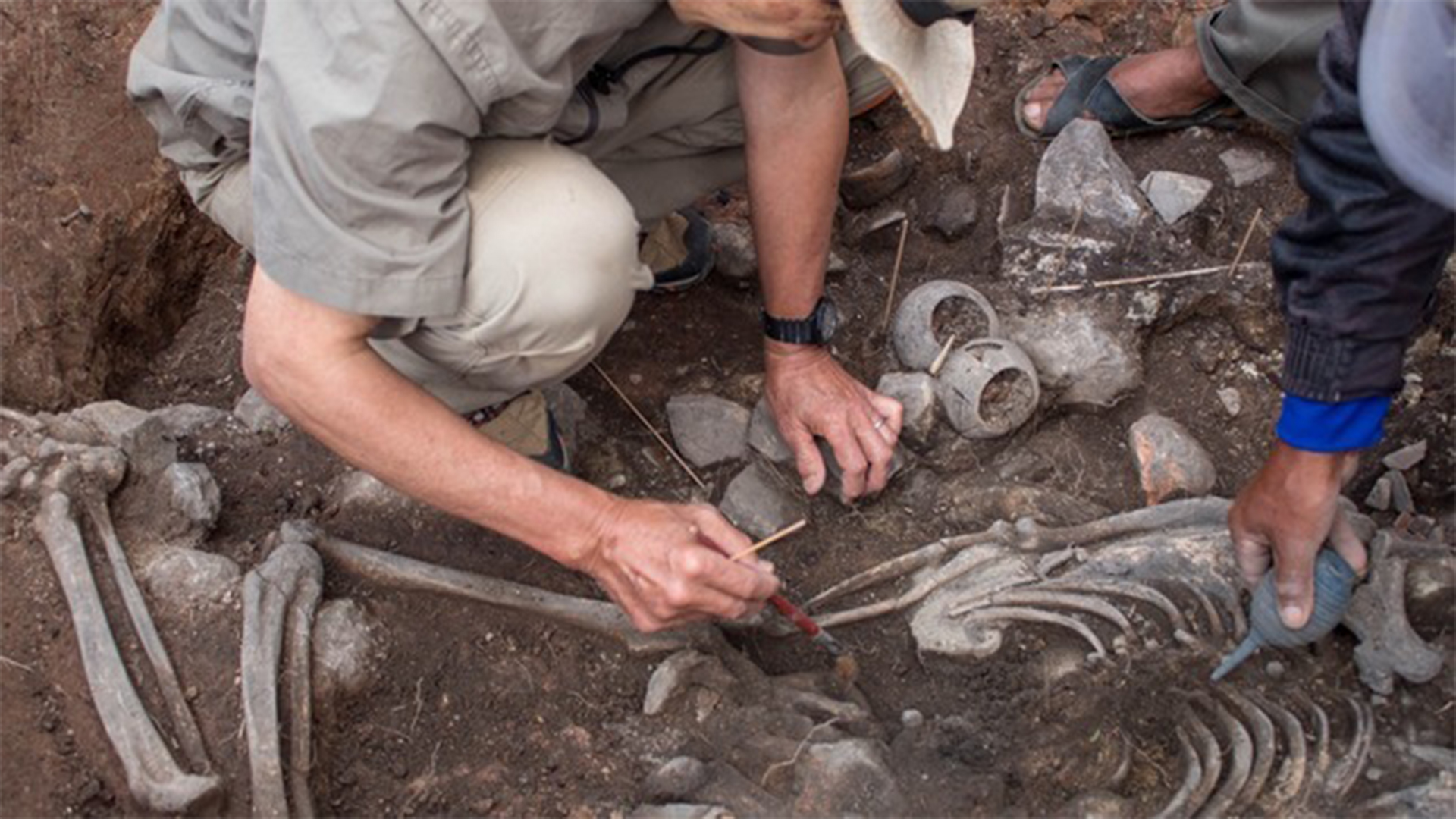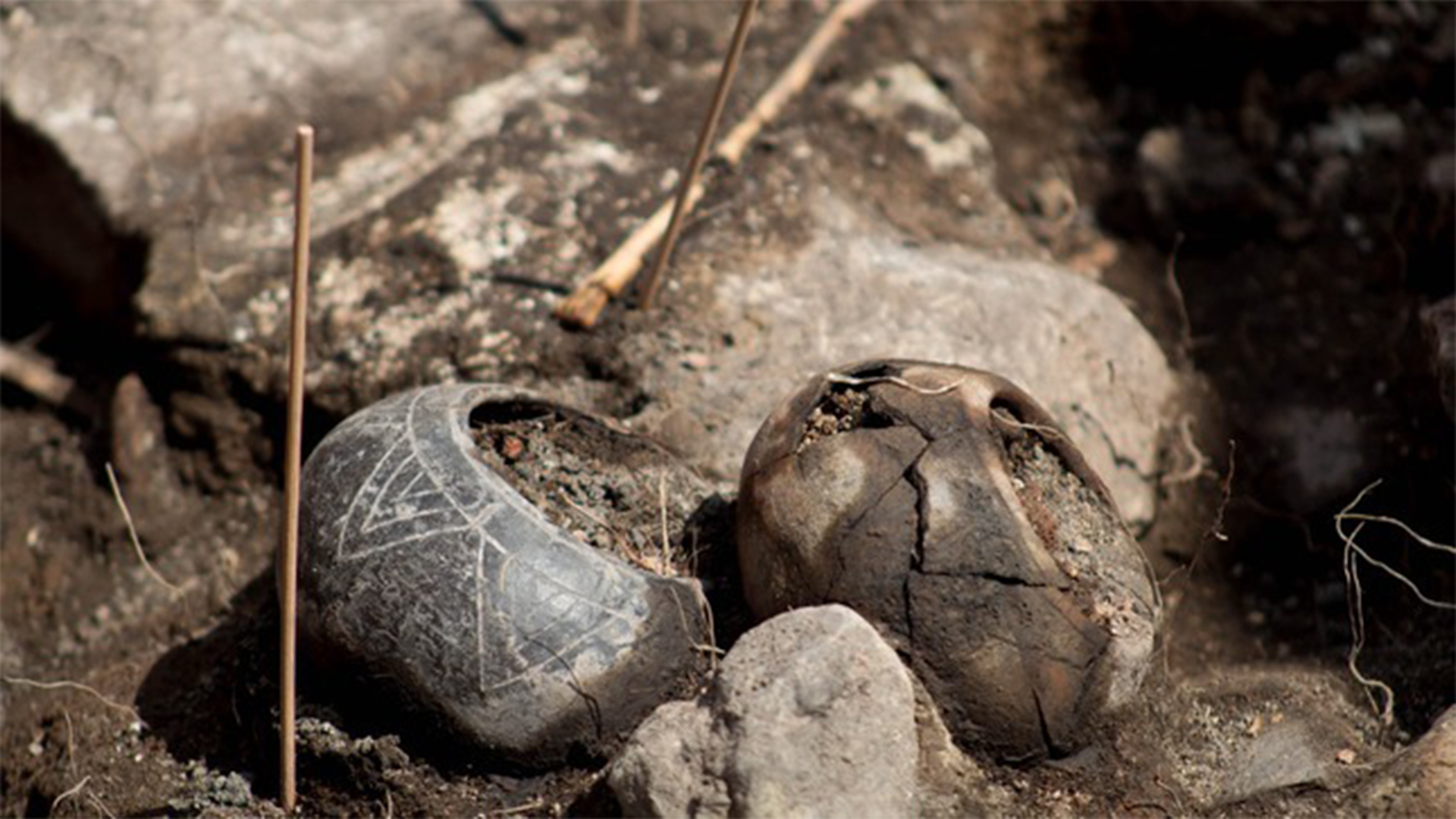3,000-year-old tomb of shaman who may have mediated 'between spiritual and earthly worlds' found in Peru
Archaeologists have unearthed the tomb and grave goods of a shaman who lived 3,000 years ago in what is now Peru.

Archaeologists in Peru have discovered a 3,000-year-old tomb containing the remains of a "priest" buried with a depiction of a jaguar near the city of Cajamarca.
The burial was found at the Pacopampa Archaeological Complex, which contains multiple ancient burials that archaeologists from Peru and Japan have been excavating since 2005, Peru's Ministry of Culture said in a translated statement.
The priest's burial contains three ceramic stamps that have images engraved on them, including a jaguar, according to the statement. These stamps may have been used for body painting. The archaeologists also found decorated ceramics in the tomb.
Related: People 'finger painted' the skulls of their ancestors red in the Andes a millennium ago
The priest's face was covered with red cinnabar, a naturally occuring substance that would have been hard to obtain, as it has to be transported from the mountains. "Cinnabar is believed to have originated in the central Andean highlands, and we believe that only the elite could have obtained or used it by large distance trade," Yuji Seki, an archaeologist with Japan's National Museum of Ethnology and co-director of the archaeological team, told Live Science in an email.

The team called the individual a "priest" in the statement, but this person may have been "more of a shaman-like figure who manipulated the powers of jaguars, snakes, and birds of prey like a shaman," Seki said. People may have turned to the shaman for answers or for help healing, and the shaman may have used his believed connection to the spiritual world to assist them.
"In other words, he must have had the ability to mediate between the spiritual and earthly worlds," Seki said. The stamps found in his tomb may have been symbols of authority, he added.
Sign up for the Live Science daily newsletter now
Get the world’s most fascinating discoveries delivered straight to your inbox.
The team has not yet done any radiocarbon dating, but the style of the artifacts matches the design of other artifacts found in the region that have been dated to about 3,000 years ago, Seki said.
Archaeologists not involved in the finding called it an interesting discovery but cautioned that it's too early to call this individual a priest.

"The materials found with the individual include seals for body painting and complete ceramic vessels suggesting that this person was an early elite," said Jason Nesbitt, an associate professor of archaeology at Tulane University who has conducted extensive archaeological research in Peru. "I am looking forward to more detailed information about the actual skeleton, including data about age and sex, as the project analysis moves forward," Nesbitt told Live Science in an email.
Justin Jennings, a senior curator of archaeology of the Americas at the Royal Ontario Museum in Canada, said that we need to be cautious about jumping to conclusions when identifying this individual. "To call the buried individual a 'priest' or 'elite' seems premature, as roles [are] unlikely to have been established" at the time the man was buried, Jennings told Live Science in an email.

Owen Jarus is a regular contributor to Live Science who writes about archaeology and humans' past. He has also written for The Independent (UK), The Canadian Press (CP) and The Associated Press (AP), among others. Owen has a bachelor of arts degree from the University of Toronto and a journalism degree from Ryerson University.









